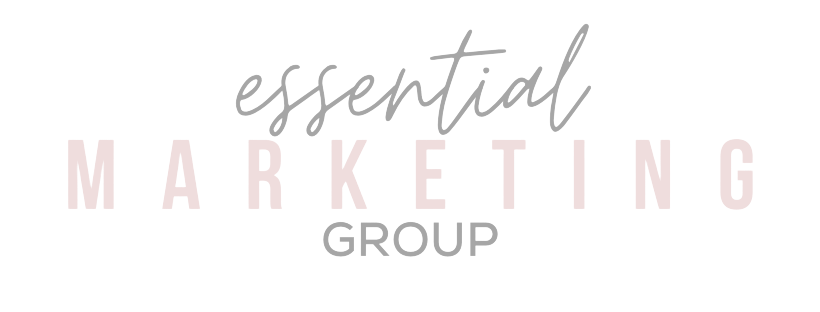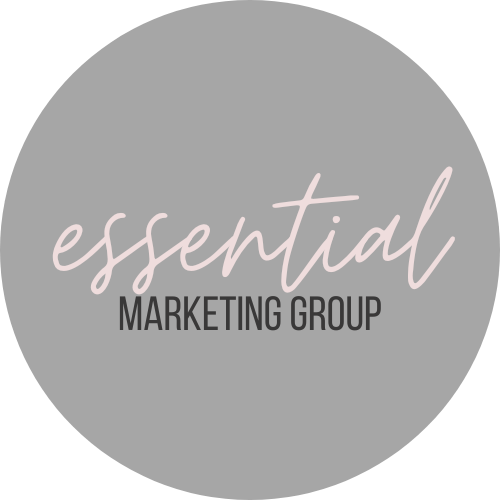Step-by-Step Guide: Building a Professional Canva Website for Your Business
In this digital world, websites are becoming more and more needed for small businesses. I hear a lot of people say, "I'm word of mouth or referral based, so I don't need one." And I used to at least partially agree with them, but the more business I get from my website contact forms, the more I know that even the people finding me through a referral contact or on social media and Google, are still checking out my website before they contact me. Which to me means, they still have some questions about the quality of my work or the legitimacy of my business. With that being said, I don't believe that means that all businesses need a big fancy website that costs thousands of dollars. Some do, based on what they need their website to do, but others need a very quick and easy informational site that will help them build sales for their business without the larger price tag.
This blog post will walk you though building a professional Canva Website (landing page) for your business. Did you even know that you could host a website (landing page) on Canva? We are here to help you figure out how to do this easily for yourself, so you can get your website up and running as quickly and painlessly as possible.
10 Steps to Creating a Canva Website to Grow Your Business!
Planning Your Canva Website -
A website can be pretty easy to create once you know exactly what you are going to put on it. The first thing you need to do is define your website's purpose and goals. Then you need to identify your target audience and tailor your website accordingly. Last, you need to start an outline of the things you need on your website and start to organize your content and pictures. If you have ever been on a confusing website, you know how important an organized website is to keeping people on your site. Once you have everything collected and organized, it's time to get started!
Setting Up Your Canva Account -
If you already have a Canva Pro account, skip to step 3. If you have a free Canva account, you have a decision to make…Would you like to connect a specific domain (that you have purchased or plan to purchase) to your Canva website? If so, you will need a Canva Pro account to do so. Once you have a Canva Pro account, you will be able to host your Canva website with custom domain for free. If you don't care about a custom domain and are cool with a website URL like yourbusinessname.mycanvasite.com, you can stick with the free version of Canva and host your site for free on Canva.
Don't have a Canva account at all? Time to sign up! Go to Canva.com and sign up for free. If you plan to get the Pro version, you will just need to upgrade when you sign up. You can also upgrade anytime if you just want to try it out first.
Are you a non-profit or teacher? You can get a Canva Pro account for free. Teachers go to https://www.canva.com/education/ and get verified. Non-profits go to https://www.canva.com/canva-for-nonprofits/ to apply for your free upgrade.
Choosing the Right Template -
One of the coolest things about Canva is their extensive library of templates to choose from. They have so many it's almost hard to choose one, but once you start looking, you will see some that match your type of business, your brand and your goals. The cool thing about Canva websites is that you can use a template, build from scratch, or a combination of both, so you are just looking for a template to get you started. The only issue we have found in finding the perfect template for your website on Canva is that they don't really have specific templates for every kind of business. If you are looking for templates to perfectly fit your business, check out our templates on our Etsy shop at https://www.etsy.com/shop/TemplatesbyMandys?ref=shop-header-name&listing_id=1500162191&from_page=listing. We have also noticed that a lot of templates that you find on Canva don't translate to mobile as seemlessly. Our templates are already set for mobile so you won't have to reconfigure once you have everything placed.
Customizing Your Website -
Once you have the perfect template, now you need to change out the colors, fonts, pictures and copy. Canva is very intuitive with your changes and once you change one font or color, it will ask if you want to change the rest. Definitely do this to make your changes as easy as possible. Then take a look at your outline that we talked about, to make sure you have a section of your site for each part of the outline. You want to make sure you don't get sidetracked by what's already on the template and miss key information you want on your site. At this time, you can take out sections you don't need and add new sections. You can also switch the order of these sections to flow how you like on your site. Upload all the pictures you need for your site and switch those out next and then dig into customizing all the copy. The last thing you will need to do is add your links to all "buttons" and social media icons so people can click through easily.
Incorporating Branding Elements -
If you have the pro version of Canva, setting up your Brand Kit will be a huge help to staying on brand and adding your logo, new text, etc. Even if you don't have the option of a brand kit, you will still need to design your site to match your business's brand colors, fonts and feel. A lot of people come to us for their website design and when we talk about colors, they want specific colors but have a whole different look and feel for their logo. We recommend staying on brand and being consistent throughout your entire website. You can still personalize your site in different ways by using custom images and graphics without losing your brand look.
Creating Engaging Content -
Just like any other website, you are going to want to have high quality images and videos to showcase your products or services. Something I like about Canva websites is that they make it really easy to embed videos directly from YouTube and Vimeo, so if you have any content there, you can stream directly to your Canva website. You will also need to focus on compelling headlines and subheadings, as well as calls-to-action (CTAs) to get people to click through to important information or to contact you and get the conversation started, to turn potential leads into new customers/clients.
Optimizing for SEO -
A lot of website designers will tell you that Canva websites aren't really websites and they would be right and wrong at the same time. Canva websites are websites, they just aren't traditional and don't follow the same SEO (Search Engine Optimization) rules. We could explain all the things you want to do on your traditional website that will help you on Google and other search engines, but that isn't relevant here because Canva doesn't have these options. However, you can still do a few things to help your website show up in organic Google searches. First is adding relevant keywords within your content. This generally happens naturally when you list your services, contact info, etc. You can also add titles to each section of your site. You do this by naming each section what the section includes. You will be able to add navigation to your Canva site (this option is available when you preview your site) and people will be able to click these "pages" at the top of your site to skip to that part of your site. Last, you can link your site to your Google My Business page once it's online. This will greatly help your Google ranking, just having a website on your listing.
Mobile Responsiveness -
Over 50% of website traffic is done on a mobile device these days. On my website it is more like 63%, which means that you have to have a mobile-friendly design. If your site is focused on the desktop visitors, you are missing the mark. The downside to Canva websites is definitely the options to changing your site to fit mobile separately from the desktop version. It takes some finagling to make it all work and look great on both desktop and mobile. The biggest tip I have is to recreate the sections of your site that aren't looking good on mobile. The templates you will find on Canva aren't generally set for mobile, but if you can recreate the sections that don't work well from scratch, they usually fall into line. Remember, our Etsy shop has lots of templates that are already set for mobile and desktop. Check out our shop here. https://www.etsy.com/shop/TemplatesbyMandys?ref=shop-header-name&listing_id=1500162191&from_page=listing
Testing Your Website -
Conducting a thorough review of your website before you launch is very important. Incorrect information, typos and links that don't work will slow down your sales from a website. Test your navigation to make sure each "page" works and that any interactive elements work. Show your website to a small group of users before you throw it out there to everyone and make any and all changes before you launch.
Publishing Your Canva Website -
When it's time to publish your Canva website, Canva makes it so easy to follow the step-by-step instructions to get your site online in no time. If you are using a generic domain, you can be ready to go in 5 minutes. If you are using a custom domain, it may take up to 48 hours to connect (usually only a few minutes though). You will need to already have a domain purchased on GoDaddy or other domain host site. I do not recommend getting your domain from Canva, even though that is an option. I haven't tried it but going with a reputable domain host is always going to be a better idea. They will ask you questions during the connection process and be sure not to skip the ones where you name your site (your business name) and add a picture/logo (favicon) that will show up in the website tab when people go to your site. You don't want these to be blank or have a Canva logo instead. Once you're online, it's time to announce your website launch on social media and other platforms. Let's start getting some traffic to your site!
Like we talked about before, a Canva website isn't for every business, but if you are a solopreneur or small business just starting out, this may be a great first step for you! It is definitely the easiest way to get a website online quickly with relatively little to no website design skills. Once you have done the work and gotten your website online, don't forget that it will take upkeep, updates and improvements over time. You can make changes at any time and re-publish, no problem.
If you are interested in seeing any of the Canva websites that we have launched for small businesses, please take a look at our Website Portfolio and scroll down to Canva Websites. If this seems overwhelming and you don't think you can create your own Canva website, we can do it for you. Contact us and we will set up a free consultation.


